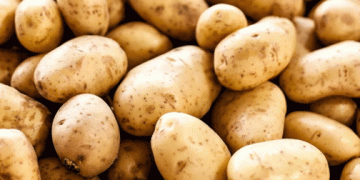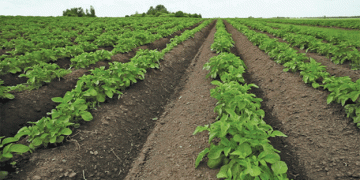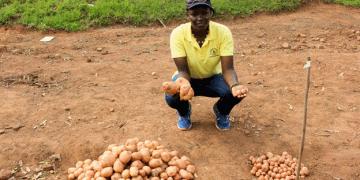According to Wilson’s Country agronomist Stuart Meredith, up to 30% of potato crops in the Republic of Ireland are now being irrigated in order to maintain yields.

The equivalent figure for Northern Ireland is 10%. He explained: “Potatoes need 20mm of rain per week to maintain full crop growth at this time of year. However, parts of Co. Down have hardly seen that amount of rain in total since main crops were planted out.
“Parts of the Cooley Peninsula in Co. Louth are also very dry at the present time. In contrast, parts of Co. Meath received significant rain fall over recent weeks. As a result potato crops there are looking extremely well at the present time.”
Thus far, it has been a year of extremes for main crop potatoes. Stuart Meredith continued: “The very cold and dry spell that followed the establishment of most crops meant that pre-emergent herbicides did not work that well.
“As a result, many growers had no option but to go in with post-emergent sprays. This has added to the stress that crops are now under.”
“There was a tremendous flush of growth during the last week or so of June, which saw crops transitioning from a very early stage of growth to full canopy cover in a matter of days,” he added.
Moisture deficit challenges
However, the continuing warm spell has created significant moisture deficit challenges for most Irish potato crops. “Soil moisture deficits are at minus 300mm in some parts of Co. Down,” the agronomist explained to Agriland.
“Many canopies have now dropped down between the drills. Crops in this condition are more predisposed to diseases, such as blackleg.”
Meredith confirmed that blight pressure remains low at the present time. He continued: “This is a direct result of the continuing dry, warm and bright weather conditions. But the disease cannot be discounted entirely. The conditions within the crop canopies are entirely different to those directly above it. “As a result, growers will continue to spray for blight on a weekly basis.”

Irish potato market
Commenting on the current state of the Irish potato market, Stuart Meredith said that producer prices have held up reasonably well over recent weeks. “The season for first and second earlies is coming to an end. While tuber numbers were quite small, their more than adequate size helped to bulk up yields,” he said. “Trial digs are showing that main crop lead tubers are currently averaging 50mm in size. Assuming that normal weather conditions return, tubers will increase in size by around 8mm per week. This would put us on track for a September harvest.”






